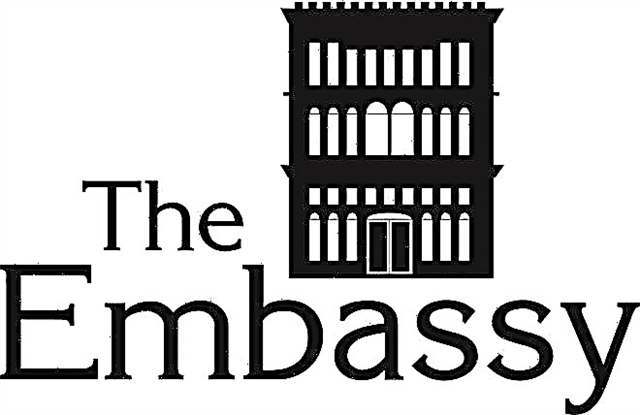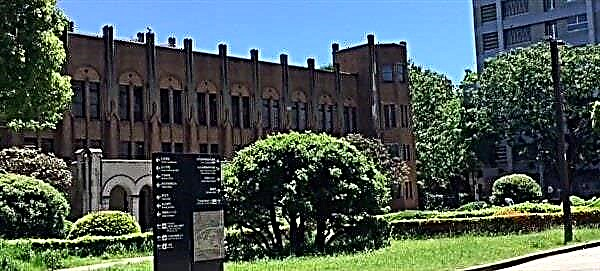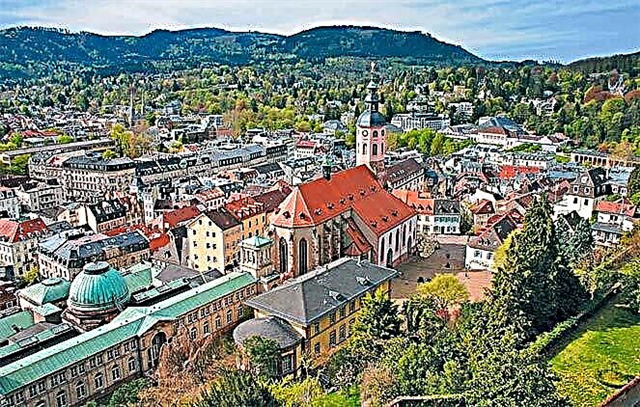The recent events in the world political arena have reasonably become the reason for an increase in the number of those wishing to move to the European part of our continent. Migrants from Syria, Afghanistan, Iraq and other war-torn regions flooded into more prosperous countries, hoping to find not only a roof over their heads, but also the opportunity to find elementary hope for the future. What can foreigners expect, what kind of life awaits them in the new conditions, what can camps in Germany provide for refugees?
Who provides assistance to refugees in German territory
Two years ago, the situation with the migrants who arrived in Germany looked as if everything was inevitably heading towards the end of Chancellor Angela Merkel's brilliant political career. Until now, there is still no reliable data on how many people arrived in the German state, how many of them received legal status, and how many were sent back.
According to the latest official data, 61% of refugees stay in special reception centers or in apartments accommodating several families, so to speak, in public housing. Statistics say that over a million asylum seekers have already arrived in the country. With such an indicator, it is not surprising that most of them still do not leave the refugee camp in Germany.
Many people mistakenly believe that the responsibility of receiving and accommodating migrants is vested in the embassies of the countries from which the migrants are arriving. In fact, three instances have such powers at the state level:
- police;
- Federal Office of the Federal Republic of Germany for Refugees and its regional offices;
- Department in charge of affairs of persons with foreign citizenship.
It is to the Office that the application for asylum is submitted, but the final decision is made by the Federal Office, more precisely, by its representative office in the region where the request is being considered.
In 2021, a meeting was held at the government level with the leadership of large and medium-sized businesses. The key goal pursued by the participants of the meeting related to the integration of migrants into the labor sphere. The result of the agreements reached was the creation of an organization called Wir zusammen ("We are together"). Today it includes 36 companies, 19 of which are large concerns and holdings. So, for example, the state-owned enterprise Deutche Bahn (railway) of 200 thousand jobs has 200 vacancies directly for refugees.
An important component of the adaptation process for newcomers is the assistance of public organizations. It is no coincidence that Germany is known all over the world as a state with a rather strong "popular sector". In addition to international organizations such as the Red Cross, Caritas and others, foundations of local communities are successfully operating on German territory.
These structures are charitable organizations founded by "active citizens" (burghers), whose intentions are to improve the situation in specific areas of community life.
As for the shares of participation, they were distributed approximately as follows:
- individuals - 80.4%,
- companies - 12.8,
- government bodies - 5.6%,
- other organizations - 1.2%.
But all these joint efforts do not guarantee that the migrant will be granted refugee status and will be able to legalize in the country.
According to statistics for 2021, the situation with migrants in Germany looks like this:
- 137,136 people received refugee certificates based on the Geneva Convention;
- 1,707 people received additional protection from other countries;
- 2,072 migrants were able to obtain protection from deportation.
What awaits refugees in distribution camps
Not all migrants imagine what awaits them in a foreign country and what they will have to be content with in exchange for peace and the opportunity to sleep peacefully at night. Indeed, for those who come in search of asylum, the attitude, despite the goodwill and willingness to help, will be more biased than those who enter the country on an immigrant visa.
Lodging
The refugee camp is a large fenced area that can only be entered with a special pass.
Homes for migrants are most often represented by long barracks or metal vans. The room itself is usually divided into rooms that can accommodate 4 to 8 people.
There are no separate rooms like in a hotel. The beds are two-story, the interior is unpretentious, and you can find only the most necessary furniture from the furniture.
Refugees live in such buildings until a decision is made to send them for permanent residence to a specific region of Germany. There they can already count on housing more or less adapted for life.
Nutrition
Everyone arriving at the camp is provided with food for the entire period of stay. Together with the keys to the room, a card or coupons are issued, which the refugee presents in the dining room in order to receive his portion.
Meals in the camp canteens cannot be called too varied: once a day you can get a hot lunch, but breakfast and dinner are most often represented by dry rations. Puree and porridge are usually instant - from bags.
But there is always a shop on the territory of the camp, thanks to which you can pamper yourself with products with higher taste characteristics. But all this can be purchased only for money, of which the immigrants do not have so many, and sometimes they do not at all.
Medical service
The issue of the health status of the camp residents is not ignored either. It is quite natural that not all refugees, before leaving their state, were able to prepare the necessary documents, and even more so no one thought about a medical certificate.
For this reason, after settling in the camp, they will have to undergo a compulsory medical examination. All camp residents can use medical services as needed.
Criminal situation
The increase in the number of refugees in Germany with its measured way of life could not but cause anxiety among citizens. Most of the camps are located in the suburbs of large settlements, where residents know each other from birth, rarely close their doors and go to bed early. And everything would be fine if it were not for the more frequent cases of theft and robbery.
The situation remains no less serious in large cities. Just remember the sensational scandal in Cologne, when dozens of women were attacked by refugees; after that, a wave of protests swept across the country calling for an end to the violence and limiting contacts between local residents and foreign immigrants.
In the camps themselves, the situation is also far from ideal. Here and there, there are reports of fighting, murder and outrage in the news.
In which regions of Germany there are camps
Settlements for migrants are located throughout the country:
- In Bavaria, a refugee camp has been set up closer to Würzburg, more precisely, on its outskirts. In order to accommodate migrants, it was necessary to re-equip the air force bases of the federal Bundeswehr. Today they provide temporary housing for Syrians, Afghans, Libyans and even Ukrainians.
- A similar hostel can be found in the small village of Wolgast in Upper Pomerania. Here, the former block-type residential building of the GDR times was adapted for the needs of the settlers.
- The Friedland distribution camp, which is located in Lower Saxony, deserves special attention. The history of this settlement goes back to the distant 1945.Initially, it was intended to accommodate the military released from captivity who arrived from the territory of the USSR. Later, this place began to serve as a shelter for Soviet migrants. By the beginning of the new century, the flow of immigrants came to naught, and therefore it was decided to transform the camp into a museum. But by 2021, the country was faced with a migration crisis and the town was again filled with foreign refugees.
How to get to this small settlement and what candidates can expect, see the article "Camp Friedland".
- The authorities of the second largest German city are also engaged in the provision of housing. The refugee camp in Hamburg is a small campus of caravan houses. The territory is surrounded by a fence, security guards are on duty at the exit from the territory.
- Zirndorf is a settlement town near Nuremberg in Bavaria. Today, a large number of Kurds and Somalis are settled here. Here migrants spend the first 1.5-2 months of their stay in the country.

Similar settlements can be found in Thuringia, Bremen, Saxony, Hesse, Brandenburg and Berlin.
Obtaining a refugee certificate
The procedure begins with the fact that the candidate must submit an application for granting him refugee status or asylum. You can contact the police or the border service representative at the airport. In the second case, you will need a visa that will allow you to legally cross the border.
The applicant will then be sent to the refugee agency, from where he will be assigned to the camp. Which one it gets to will depend on the availability of seats. All those who applied to the department are obliged to live in such a settlement.
Further, the sequence of actions looks like this:
- entering data into the general registration system of refugees;
- taking fingerprints;
- checking whether the applicant tried to obtain asylum in another state.
- establishing the route of arrival on German territory. If the applicant traveled to Germany via Poland, then his documents will be sent there.
Further, an interview is provided, during which the reasons that forced the refugee to leave their home country will be established. After that, you will have to wait for a decision. It can be of several types:
- granting political asylum;
- the status of "taken under state protection";
- refusal of the status, but the provision of a one-year visa for residence in Germany due to the difficult situation in the country of origin;
- unconditional refusal.
The article “Obtaining refugee status in Germany” will help you to understand the procedure that candidates for obtaining the appropriate status go through.
Summing up
To get protection on German territory, you need to go through a difficult path, which begins in special distribution camps. The candidate is sent to one of them after declaring his desire to apply for asylum. The choice of a camp is most often determined by the availability of places in it.
Refugee camps are located throughout the country and have approximately the same arrangement. On the territory of the settlement, the applicant is provided with a room, food and medical care. The stay in the camp will last exactly as long as it takes to make a decision on the future fate of the refugee.











